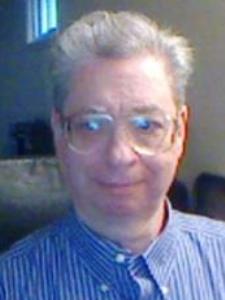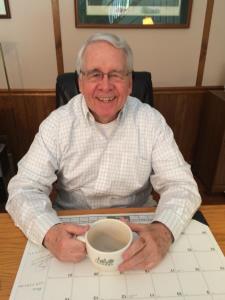
Daniela M.
asked • 02/04/14When selecting two people, find the probability that one works in an office and the other one drives a car?
3 Answers By Expert Tutors

Kenneth G. answered • 02/05/14
Experienced Tutor of Mathematics and Statistics
An urn contains 2000 balls. Each ball has two sides which each have different colors - one color on each half of the ball. 1050 of the balls have one blue side and 1150 of the balls have one red side. We don't know what the other colors are besides blue and red. What is the probability that for two balls successively selected from the urn one has a red side and the other has a blue side.
Note that we don't know how many balls have both a red and a blue side in this problem. In the absence of that information, we have to assume for purposes of computing probabilities in this problem that the colors are assigned to the balls randomly so that the probability that a ball has both a red and a blue side is the product of the two probabilities of having a blue side and a red side.
Step 1: we calculate some initial probabilities. I claim that:
P1 = P(both balls selected have one red side and one blue side) =
[(1150/2000)*(1050/2000)]*[(1149/1999)*(1049/1999)]
P2 = P(one ball has a red side but no blue and one ball has a blue side but no red) =
2*[(1150/2000)*(950/2000)]*[(1050/1999)*(850/1999)]
P3 = P(one ball has both a red and a blue side and the other has only a red side) =
2*[(1150/2000)*(1050/2000)][(1149/1999)*(950/1999)]
P4 = P(one ball has both a red and a blue side and the other has only a blue side) =
2* [(1150/2000)*(1050/2000)][(1049/1999)*(850/1999)]
The probability that one of the balls has a red side and one has a blue side is the sum of these four probabilities.
P1 = .091054 (approximately)
P2 = .122004
P3 = .164921
P4 = .134718
So P1 + P2 + P3 + P4 = .512697 or 51.3% approximately.
So I think there is a 51.3% chance that one person has an office job and the other drives a car, given the information provided in the problem.

Alex S. answered • 02/05/14
Retired, Looking to Share My Love of Mathematics and Computers

Kenneth G.
02/05/14

Kenneth G.
02/05/14

Alex S.
02/05/14

Kenneth G.
02/05/14

Alex S.
02/05/14
Arthur D. answered • 02/05/14
Mathematics Tutor With a Master's Degree In Mathematics

Kenneth G.
Some questions for you.
1. It seems to me the problem doesn't say that the car drivers and the office workers are the only people. It says that there are 2000 people and the most important ones are car drivers and office workers. For example, it seems to me that all the 1050 office workers could actually be car drivers and there could be 850 people of the 200 who do not work in office or drive a car. How did you conclude from the problem statement that this could not be true?
2. When you're figuring probabilities where 200 people both drive cars and work in office, it seems to me that then 1150 - 200 = 950 people only drive cars, and 1050 - 200 = 850 people only work in office. In this case, there are no people who do not drive cars and also do not work in office. In your solution you say, for example, "The probabilities for W and D are (1050/2000)(1150/1999) = .301875." I assume this is a probability for people who only drive and only work in office but do not do both. But there not 1050 people who only work in office and there are not 1150 people who only drive. Can you give your reasoning behind that computation?
3. Your probabilities add up to a probability of .42188 to choose a worker and a driver. At the end you computed the probabilities for the cases "W and W" or "D and D" which make up the remainder of the probability space and got a total of .6059 . Those probabilities, when added to the total you computed for the other cases, .42188, should add to a probability of 1.0 . However .6059 + .42188 = 1.02778 which is more than 100%. Can you explain the extra 2.7%?
Best wishes!
02/06/14

Kenneth G.
02/07/14

Alex S.
02/07/14

Kenneth G.
02/07/14

Arthur D.
02/08/14
Still looking for help? Get the right answer, fast.
Get a free answer to a quick problem.
Most questions answered within 4 hours.
OR
Choose an expert and meet online. No packages or subscriptions, pay only for the time you need.





Kenneth G.
02/05/14